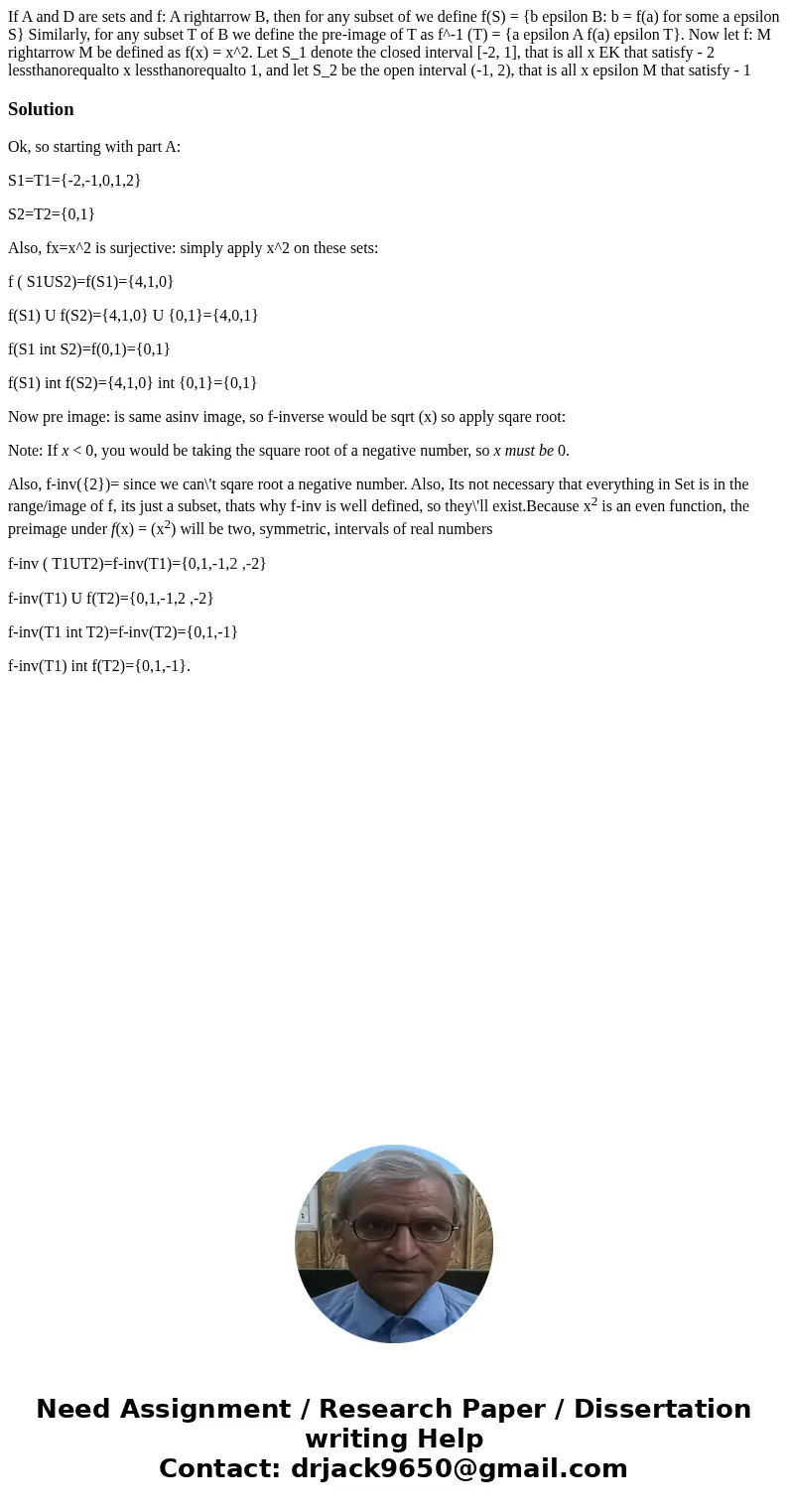If A and D are sets and f A rightarrow B then for any subset
Solution
Ok, so starting with part A:
S1=T1={-2,-1,0,1,2}
S2=T2={0,1}
Also, fx=x^2 is surjective: simply apply x^2 on these sets:
f ( S1US2)=f(S1)={4,1,0}
f(S1) U f(S2)={4,1,0} U {0,1}={4,0,1}
f(S1 int S2)=f(0,1)={0,1}
f(S1) int f(S2)={4,1,0} int {0,1}={0,1}
Now pre image: is same asinv image, so f-inverse would be sqrt (x) so apply sqare root:
Note: If x < 0, you would be taking the square root of a negative number, so x must be 0.
Also, f-inv({2})= since we can\'t sqare root a negative number. Also, Its not necessary that everything in Set is in the range/image of f, its just a subset, thats why f-inv is well defined, so they\'ll exist.Because x2 is an even function, the preimage under f(x) = (x2) will be two, symmetric, intervals of real numbers
f-inv ( T1UT2)=f-inv(T1)={0,1,-1,2 ,-2}
f-inv(T1) U f(T2)={0,1,-1,2 ,-2}
f-inv(T1 int T2)=f-inv(T2)={0,1,-1}
f-inv(T1) int f(T2)={0,1,-1}.

 Homework Sourse
Homework Sourse